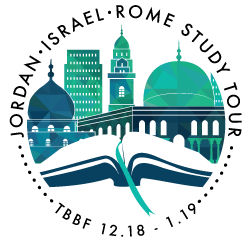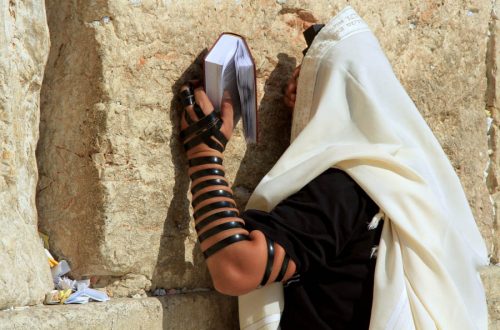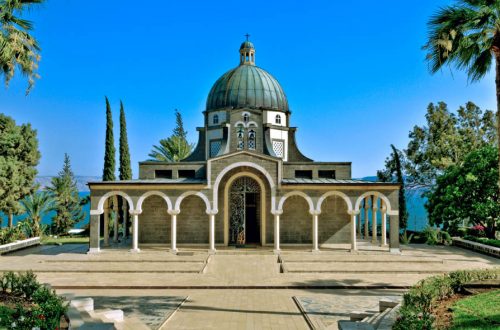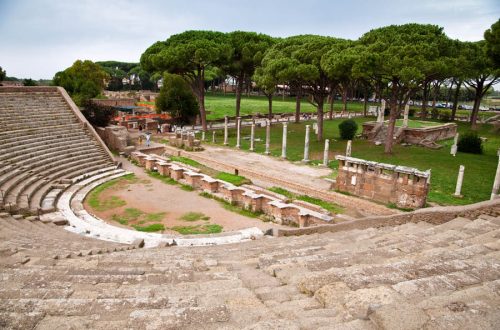Temple Mount
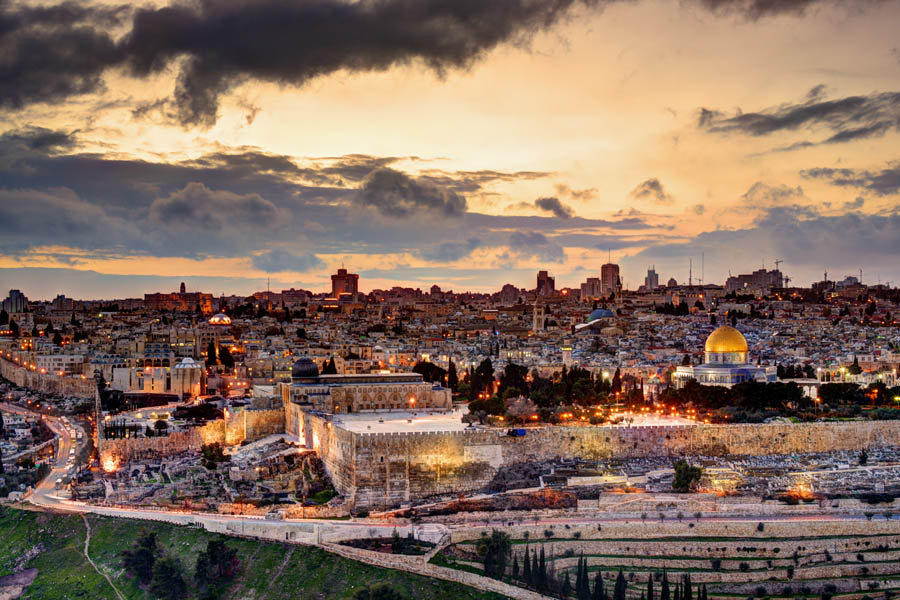
The current plateau in the middle of the Old City is known as Temple Mount. It was here that Herod’s magnificent Temple stood with its golden exterior visible for miles.
This plateau is also known in the Bible as Mt. Mariah, and is the place where Abram offered Isaac to God (Genesis 22). It is also the place where David purchased the threshing floor (2 Samuel 24) and a sacrifice was offered to God who ended the plague. And it was on this mountain that Jesus, the Lamb of God, was crucified for the sins of the world.
Originally, the area was a smaller mountain, upon which was built the village of Jerusalem. Over the centuries, as the city walls were expanded and the spaces filled in, the mountain has become the large plateau we know today.
Dome of the Rock and al-Aqsa Mosque: The Dome is the oldest example of early Islamic architecture and was built in 691 ad. It covers the foundation stone thought by Muslims to be the rock from which Mohammad ascended to heaven.
The al-Aqsa Mosque occupies the end of Temple Mount opposite the Dome. Its name means “Farthest Mosque” and stems from its distance from Mecca. It is the 3rd most sacred mosque in Islam, and the 2nd oldest after the Ka’ba in Mecca.
City of David
The original inhabitants of Jerusalem lived not on the site of today’s Old City, but on a narrow ridge descending south from the present Temple Mount. This is where King David captured the fortress of a Canaanite tribe, the Jebusites, 1000 years before Christ. On this slender spur — about 5 hectares (12 acres) in area — David established his capital and pitched a tent to house the Ark of the Covenant. The site possessed the natural defences of the Hinnom valley to the south, the Kidron Valley to the east, and the Tyropoeon Valley (now largely filled in by the debris of centuries) to the west. And it had fresh water from the Gihon Spring gushing at its foot. Besides David and his son Solomon, this would have been the stomping ground of kings Hezekiah and Josiah and the prophets Isaiah and Jeremiah. Standing on the observation platform of the City of David archaeological park, it is easy to see how David could have looked down from the roof of his palace and spied the beautiful Bathsheba bathing (2 Samuel 11: 2).
(from seetheholyland.net)
Hezekiah’s Tunnel

Hezekiah’s Tunnel was cut through solid rock at the beginning of the 8th century BC. One of the most ingenious engineering accomplishments of ancient times, it bears testimony to the crucial importance of a water supply to Jerusalem.
In times of war and siege, the City of David was vulnerable, since it depended on water from the Spring of Gihon. This spring, which gushes forth intermittently from a natural cave in the Kidron Valley, was outside the city walls. King Hezekiah decided to bring water from the spring into the city. Following part of a natural fissure, two sets of teams began at opposite ends to cut a winding 533-meter tunnel on a double-S course — and they met in the middle. Axe and chisel marks can be seen along the entire length of the tunnel, which averages 60 centimeters wide and 2 meters high.
In 1880 a boy discovered an inscription in the rock near the mouth of the tunnel, which records its construction. Of the final breakthrough, it says: “While the laborers were still working with their picks, each toward the other, and while there were still three cubits to be broken through, the voice of each was heard calling to the other, because there was a crack in the rock to the south and to the north. At the moment of breakthrough, the laborers struck each toward the other, pick against pick. Then the water flowed”
Hezekiah’s Tunnel may be traversed on foot, best starting from the Spring of Gihon, outside the Dung Gate. A reliable torch is necessary and footwear is advisable. Water is generally knee-high but can rise to waist height.
(from seetheholyland.net)
Pool of Siloam
This is where Jesus ordered a blind man to go to wash mud out of his eyes and it lay undiscovered until 2004. Until then, a much smaller pool 50 meters north-west, at the end of Hezekiah’s Tunnel, had been regarded as the Pool of Siloam.
The account of the healing of the man who had been blind since birth (John 9:1-41) is one of the longest Gospel narratives of any of the miracles of Jesus. The disciples asked whose sin had caused the man’s blindness, his own or his parents? Neither, said Jesus; he was born blind “so that God’s works might be revealed in him”. Then Jesus spat on the ground, made mud with his saliva and spread the mud on the man’s eyes. “Go, wash in the Pool of Siloam,” he said. The man did as he was told, and he was able to see.
The rediscovered pool, was also fed by water from Hezekiah’s Tunnel, through a channel leading from the smaller pool. Coins found in the cement show it was in use in Jesus’ time, when four sets of monumental steps led from street level into the pool.
This property, now belonging to the Greek Orthodox Church, was once part of an orchard known as the King’s Garden. The building of a wall around the pool and the garden is recorded in Nehemiah 3:15.
(from seetheholyland.net)
Valley of Elah

A valley in the Shephelah, between Azekah and Socoh, where David killed Goliath. The Valley of Elah is modern Wadi es-Sant.
Elah means “terebinth.” The Valley of Elah ran east to west between Israelite and Philistine territory, with Gath to the west, which made it a likely spot for a clash between the two powers. In 1 Samuel 17, the Israelite forces were probably on the hills on the north side of the valley, with the Philistines opposite them.
(from Lexham Bible Dictionary)
Related Biblical References:
- Gen 22:1-18 – Abraham on Mt. Moriah
- 2 Sam 24:18-25 – David buys the land for the temple
- 2 Sam 5:4-9 – David captures Jerusalem
- 2 Kings 20:20 – Hezekiah builds pools and tunnel
- Neh 3:15 – Wall built around the pool of Siloam
- John 9:1-10:21 – Jesus gives sight to a man born blind
- 1 Sam 17:1-58 – David & Goliath in the Valley of Elah
